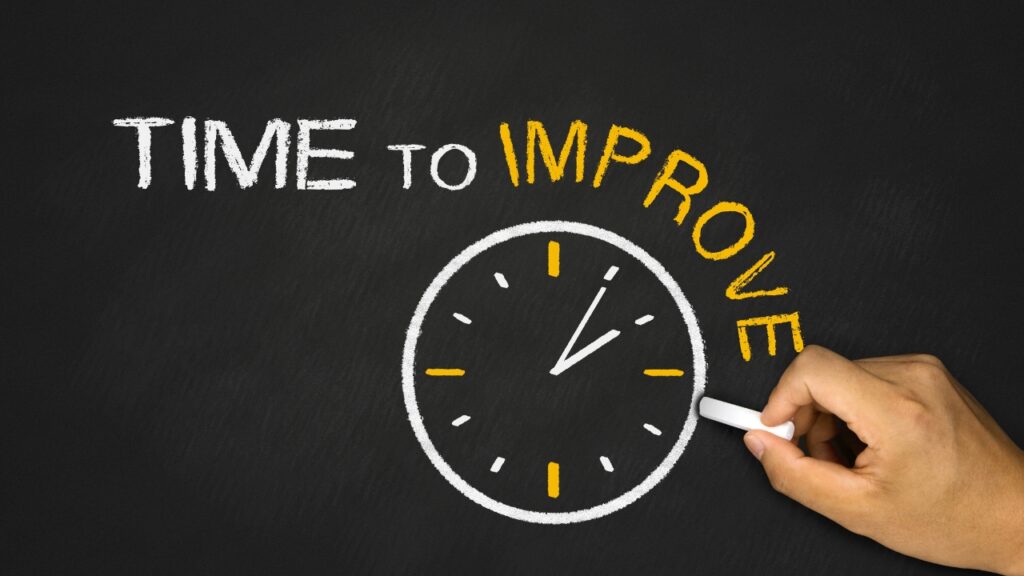In today’s fast-paced world, achieving financial health is more crucial than ever for ensuring long-term stability and peace of mind. With rising costs and unpredictable economic shifts, mastering effective budgeting strategies can be the key to securing your financial future. This guide will walk you through five proven methods to enhance your personal finance, from crafting a comprehensive budget to reducing debt through targeted repayment plans. Establishing a robust emergency fund and investing in your financial education are also pivotal steps in this journey. By setting clear financial goals, you can transform your approach to personal finance, paving the way for a more secure and prosperous tomorrow.
Creating a Comprehensive Budget
A comprehensive budget is the foundation of financial health. It provides a clear picture of your income and expenses, helping you make informed decisions about your money.
Understanding Your Income and Expenses
Understanding your income and expenses is crucial for creating an effective budget. Start by listing all sources of income, including your salary, investments, and any side hustles.
Next, categorize your expenses into fixed (rent, utilities) and variable (groceries, entertainment) costs. Don’t forget to include irregular expenses like annual subscriptions or car maintenance.
Be thorough in your analysis. Many people underestimate their spending, especially on small, frequent purchases. Use bank statements and receipts to get an accurate picture of where your money goes.
Remember, the goal is to create a realistic snapshot of your financial situation. This understanding will form the basis for making informed decisions about your spending and saving habits.
Tracking Spending Habits
Tracking your spending habits is a crucial step in maintaining financial health. It involves consistently recording all your expenses, no matter how small, to understand where your money is going.
Start by choosing a tracking method that works for you. This could be a budgeting app, a spreadsheet, or even a simple notebook. The key is to make it a daily habit.
Categorize your expenses as you track them. This will help you identify areas where you might be overspending. Look for patterns in your spending – are there particular days or situations where you tend to spend more?
Regular tracking allows you to catch and correct overspending early. It also helps you stay accountable to your budget and financial goals. Remember, what gets measured gets managed.
Adapting Budget for Success
Adapting your budget is essential for long-term financial success. A static budget quickly becomes outdated and ineffective as your life circumstances change.
Review your budget regularly – monthly or quarterly – to ensure it still aligns with your current financial situation and goals. Look for areas where you consistently overspend or underspend and adjust accordingly.
Be flexible and willing to make changes. If you find you’re always exceeding your grocery budget, for example, it might be more realistic to increase that category and decrease another.
Remember, a budget is a tool to help you, not restrict you. It should evolve with your changing needs and priorities. The goal is to create a budget that you can stick to in the long run, supporting your overall financial health.
Effective Debt Reduction Strategies
Reducing debt is a crucial step towards financial freedom. By implementing effective strategies, you can lower your debt burden and improve your overall financial health.
Prioritizing High-Interest Debts
Prioritizing high-interest debts is a smart strategy for reducing your overall debt burden. These debts, often from credit cards or personal loans, can quickly spiral out of control if left unchecked.
Start by listing all your debts and their corresponding interest rates. Focus on paying off the debt with the highest interest rate first, while making minimum payments on others. This approach, known as the debt avalanche method, minimizes the total interest you’ll pay over time.
Consider transferring high-interest credit card balances to a card with a lower or 0% introductory APR. This can provide a temporary reprieve from high interest charges, allowing you to make more progress on the principal.
Remember, while prioritizing high-interest debt, it’s crucial to maintain minimum payments on all other debts to avoid late fees and negative impacts on your credit score.
Exploring Consolidation Options
Debt consolidation can be an effective tool for simplifying your debt repayment process and potentially reducing your interest rates. It involves combining multiple debts into a single loan or payment.
There are several consolidation options to consider:
- Personal loans: These can offer lower interest rates than credit cards.
- Balance transfer credit cards: These often come with 0% introductory APR periods.
- Home equity loans or lines of credit: These use your home as collateral and typically offer lower rates.
Before consolidating, carefully compare the terms, fees, and interest rates of different options. Ensure that the new loan truly offers savings over your current debts.
Remember, consolidation doesn’t eliminate your debt – it restructures it. It’s crucial to address the underlying spending habits that led to the debt in the first place to avoid falling back into the same pattern.
Implementing the Snowball Method
The debt snowball method is a popular debt reduction strategy that focuses on the psychological win of paying off smaller debts first. This approach can provide motivation and momentum in your debt repayment journey.
Here’s how it works:
- List your debts from smallest to largest, regardless of interest rates.
- Make minimum payments on all debts except the smallest.
- Put any extra money towards the smallest debt.
- Once the smallest debt is paid off, move to the next smallest.
The key advantage of this method is the quick wins it provides. Paying off smaller debts can give you a sense of progress and motivation to continue.
While this method may result in paying more interest over time compared to focusing on high-interest debt first, for many people, the psychological benefits outweigh this drawback. The momentum gained can lead to long-term success in debt reduction.
Building an Emergency Fund
An emergency fund is a crucial component of financial health, providing a safety net for unexpected expenses or income loss. It’s your financial cushion against life’s uncertainties.
Determining Your Savings Goal
Determining your savings goal is the first step in building an effective emergency fund. The general rule of thumb is to save 3-6 months of living expenses, but this can vary based on your personal circumstances.
Consider factors such as:
- Job stability
- Number of income earners in your household
- Health and insurance coverage
- Dependents
If you’re just starting out, aim for a smaller, more achievable goal like $1,000. This can provide motivation and a sense of accomplishment as you work towards your larger goal.
Remember, any amount saved is better than none. Start where you can and gradually increase your savings as your financial situation improves.
Consistent Savings Practices
Consistent savings practices are key to building and maintaining a robust emergency fund. The key is to make saving a habit, not a one-time event.
Start by treating your emergency fund contribution like a bill. Set up automatic transfers from your checking account to your emergency fund savings account each payday. This “pay yourself first” approach ensures you’re consistently adding to your fund.
Look for ways to boost your savings:
- Allocate any windfalls (tax refunds, bonuses) to your fund
- Save any raises or cost-of-living increases
- Cut unnecessary expenses and redirect that money to savings
Remember, consistency is more important than amount. Even small, regular contributions will add up over time. The goal is to make saving a natural part of your financial routine.
Choosing the Right Account
Choosing the right account for your emergency fund is crucial. You want an account that’s easily accessible in case of emergencies, but separate from your everyday spending money to avoid temptation.
Consider these factors when selecting an account:
- Liquidity: You should be able to access the funds quickly when needed
- Interest rates: Look for high-yield savings accounts to make your money work harder
- Fees: Avoid accounts with high maintenance fees or withdrawal penalties
- FDIC insurance: Ensure your funds are protected
Online savings accounts often offer higher interest rates than traditional banks. Some people prefer to keep their emergency fund in a money market account, which can offer check-writing privileges for easy access.
Remember, the goal is to find a balance between accessibility and growth. Your emergency fund should be there when you need it, while still earning some interest in the meantime.
Investing in Financial Education
Investing in your financial education is a crucial step towards improving your overall financial health. It empowers you to make informed decisions about your money and future.
Exploring Resources and Courses
Exploring financial education resources and courses is an excellent way to enhance your knowledge and skills in personal finance management. There’s a wealth of information available, from free online resources to formal educational programs.
Start with reputable websites like Investopedia, Khan Academy, or government sites like MyMoney.gov. These offer free, comprehensive guides on various financial topics.
Consider taking online courses from platforms like Coursera or edX. Many universities offer financial literacy courses that you can audit for free or complete for a small fee.
Don’t overlook local resources. Many banks, credit unions, and community centers offer free financial education workshops. These can be great opportunities to learn and ask questions in person.
Remember, the goal is to find resources that match your learning style and current knowledge level. Start with the basics and gradually move to more complex topics as your understanding grows.
Understanding Financial Terminology
Understanding financial terminology is crucial for navigating the complex world of personal finance. Familiarizing yourself with key terms can help you make more informed decisions and avoid costly misunderstandings.
Start by creating a glossary of common financial terms. Include basics like:
- APR (Annual Percentage Rate)
- Credit Score
- Compound Interest
- Diversification
- ETF (Exchange-Traded Fund)
Use reputable financial dictionaries online to look up unfamiliar terms as you encounter them. Many financial websites also offer ‘term of the day’ features to help expand your vocabulary.
Remember, understanding these terms isn’t just about memorization. Try to apply them in real-world contexts. For example, when reviewing a credit card offer, identify the APR and understand how it affects the cost of borrowing.
Applying Knowledge Practically
Applying your financial knowledge practically is where the real value of financial education comes into play. It’s one thing to understand concepts, but putting them into action is what truly improves your financial health.
Start by reviewing your current financial situation through the lens of what you’ve learned. Are there areas where you can apply new strategies or make more informed decisions?
Consider creating a financial plan that incorporates your new knowledge. This might include:
- Setting up a budget based on learned principles
- Reviewing and adjusting your investment strategy
- Implementing debt reduction techniques you’ve studied
Don’t be afraid to start small. Even minor changes, like negotiating a better interest rate on your credit card or starting to track your expenses, can have significant impacts over time.
Remember, financial education is an ongoing process. Continue to seek out new information and adjust your strategies as you learn and as your financial situation evolves.
Setting Specific Financial Goals
Setting specific financial goals is a crucial step in improving your overall financial health. It provides direction and motivation for your financial decisions and actions.
Short-Term vs Long-Term Goals
Understanding the difference between short-term and long-term financial goals is crucial for effective financial planning. These two types of goals work together to create a comprehensive financial strategy.
Short-term goals typically span from a few months to a couple of years. Examples include:
- Building an emergency fund
- Paying off a credit card
- Saving for a vacation
Long-term goals, on the other hand, look further into the future, often 5-10 years or more. These might include:
- Saving for retirement
- Buying a home
- Funding a child’s education
It’s important to balance both types of goals in your financial plan. Short-term goals provide quick wins and motivation, while long-term goals ensure you’re preparing for major life milestones and a secure future.
Remember, your goals should be SMART: Specific, Measurable, Achievable, Relevant, and Time-bound. This framework helps ensure your goals are clear and attainable.
Developing a Realistic Timeline
Developing a realistic timeline for your financial goals is crucial for success. It helps you stay motivated and on track, while also ensuring your goals are achievable within your current financial situation.
Start by assessing each goal individually. Consider factors such as:
- Your current financial situation
- Your income and expenses
- The amount you need to save
- Any potential obstacles or challenges
Break larger goals into smaller, manageable milestones. For example, if your goal is to save $10,000 in two years, set quarterly targets to keep you on track.
Be realistic but also challenge yourself. If a timeline feels too easy, you might not be pushing yourself enough. Conversely, if it feels impossible, you may need to adjust your expectations or look for ways to increase your income or decrease expenses.
Remember, timelines can be adjusted as your situation changes. The key is to have a plan that motivates you to take consistent action towards your goals.
Monitoring Progress Regularly
Monitoring your progress regularly is essential for staying on track with your financial goals. It allows you to celebrate successes, identify areas for improvement, and make necessary adjustments to your strategy.
Set up a system for tracking your progress. This could be:
- A spreadsheet where you log your savings and debt payments
- A budgeting app that tracks your spending and saving
- Regular check-ins with a financial advisor or accountability partner
Review your progress at least monthly, if not more frequently. Look at:
- How much you’ve saved or paid off
- Whether you’re meeting your timeline milestones
- Any challenges or unexpected expenses you’ve encountered
Be honest with yourself during these reviews. If you’re falling short, don’t get discouraged. Instead, use it as an opportunity to reassess your strategy. Maybe you need to adjust your timeline, find new ways to save, or reallocate your resources.
Remember, the path to financial health isn’t always linear. Regular monitoring helps you stay flexible and responsive to changes in your financial situation, keeping you on track towards your ultimate goals.
Conclusion
Achieving financial health is a multifaceted journey that demands a proactive approach and commitment. By adopting comprehensive budgeting strategies, prioritizing effective debt reduction, building a resilient emergency fund, investing in your financial education, and setting clear financial goals, you lay the groundwork for a stable financial future. Remember that financial health is not just about accumulating wealth, but about creating a balanced plan that aligns with your life goals and values. As you continue to refine your strategies and adapt to changing circumstances, you’ll find that these steps not only enhance your financial well-being but also empower you to face financial challenges with confidence. Keep reviewing your progress, remain flexible in your financial plans, and celebrate each milestone along the way. With dedication and informed decision-making, you can achieve the financial stability and peace of mind you seek.
Check this post Do I Need a Personal Accountant?




